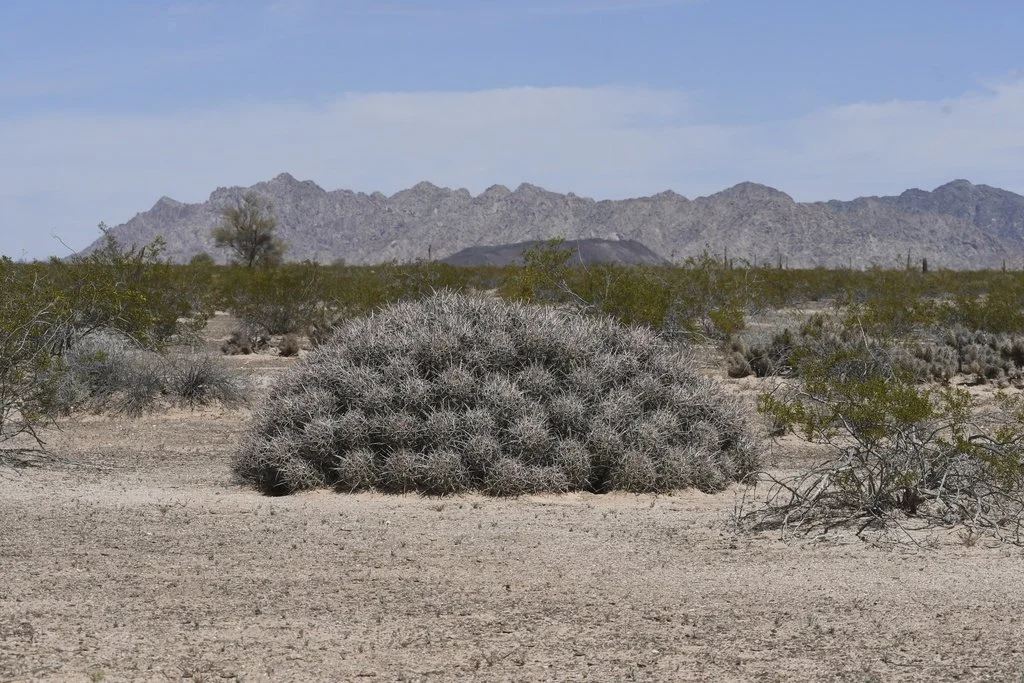Cottontop Cactus
Homalocephala polycephala
A densely spiny cactus, solitary when young but almost always branching from the base in age and forming spreading clumps of 20-30 heads ( sometimes of more than 100 stems). The cluster can reach about 2’ tall, and sucker out to about 4’ wide. The spines are yellow to red. In summer flowers occur with yellow with pink midribs. The flowers are followed by small, globose fruits that are heavily covered with white hairs, crowned by the somewhat spinescent scales, giving the common name "Cotton top cactus”.
The juvenile plants of this species looks quite different from the mature specimens as the the rib structure is not yet apparent, and they have pronounced tubercles making them look superficially like Mammillarias.
This species is extremely xerophytic and adapted to very dry soils. Growing on their own roots they are very difficult and often rot. Grafted plants tend to be easier to grow, if you can find them grafted. Otherwise provide very well-draining sandy or rocky soil, and water seldom. Water once a month in summer in the ground, container plants maybe about once a week in summer. Don’t water this plant in winter especially when temperatures are cold. If kept dry in winter, they are hardy to at least 10°F or more if the frost is brief.
Photo by Anthony Mendoza, SEINET
Echinocactus horizonthalonius on iNaturalist
The genus name, Homocephala comes from greek: homalo (even); kephale (head). The species name, polycephala, is also derived from Greek stems: poly, meaning "many" and kephalē meaning "head", referring to the nature of this plant to produce many heads
There are 3 species of Homalocephala native to southern United States and northeastern Mexico. This plant is more commonly known as Echinocactus polycephalus but recently changed by Vargas & Bárcenas.
occurs in the Mojave Desert region of Arizona, California, and Nevada. It also occurs in the Sonoran Desert region of southern California and northern Sonora, Mexico. The plants grow in some of the most extreme arid environments in the American Southwest, such as Death Valley National Park, and the Mojave National Preserve of Southern California.
Though these plants are notoriously difficult to grow in cultivation, their populations are very steady, as evidenced from carbon-dated material in packrat middens showing that populations seem to have remain unchanged for the past 30,000 years, even into the president Anthropocene.
The flowers occur in summer, photo by CK Kelly, iNaturalist
The fruit is what gives the plant is common name, cotton top cactus. Photo by canyonbill, iNaturalist
Some plants have especially red spines. Photo by Emily Scherer, iNaturalist
An especially large specimen, photo by southwestwanderer, iNaturalist





